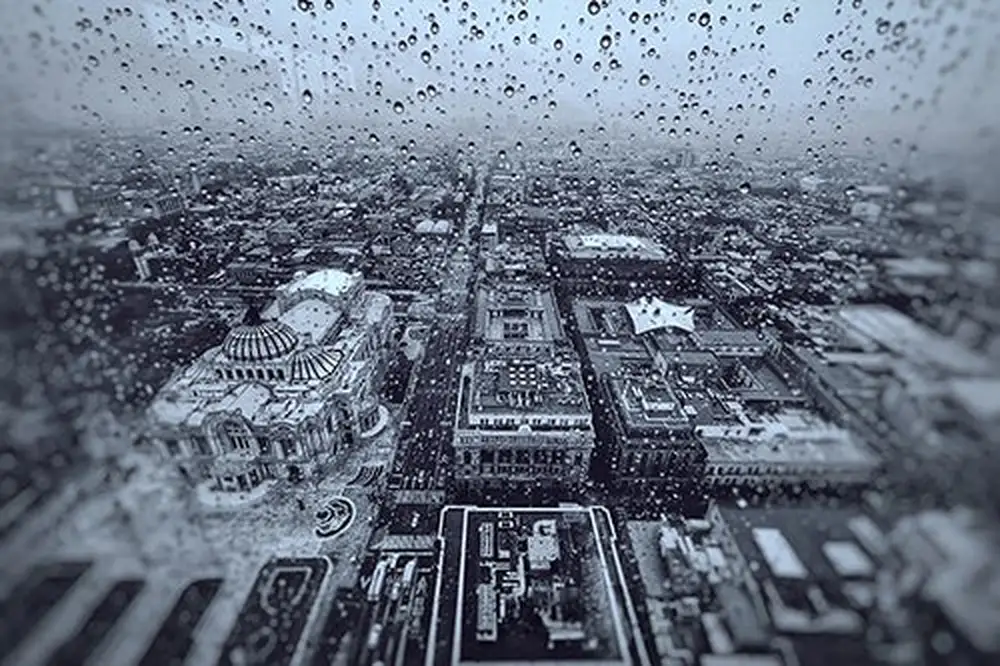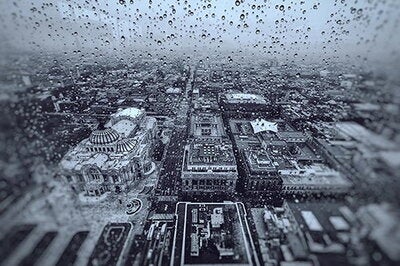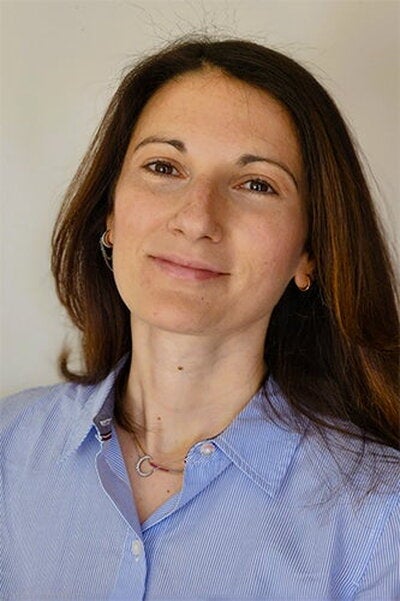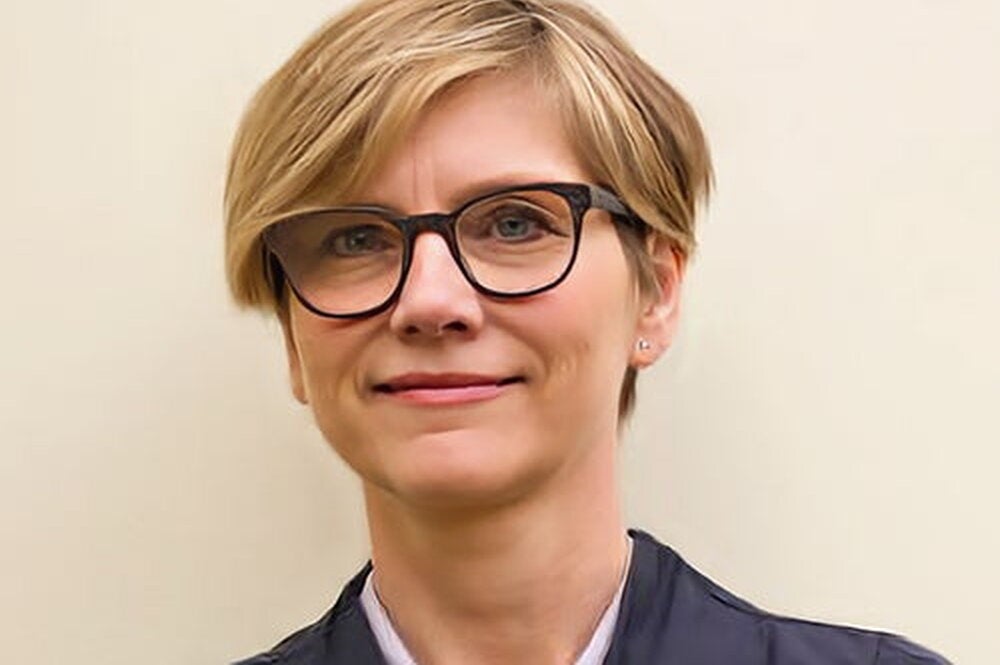

Ilaria Strocchia, a PhD candidate in the Department of Spanish & Portuguese specializing in Spanish literatures and cultures, recently won first place in The Graduate College and the Media Common of the University Library 2025 Image of Research competition. The competition honors students who both combine excellence in their field of research with visual creativity and intellectual diversity.
Strocchia’s photo is a black and white image of water drops on the windows of the Torre Latinoamericana in Mexico City. Her description reads, in part:
“From the city’s depths, the modern and imposing building emerges, opening up a view toward a vast and complex megalopolis, where spaces and times crowd together, shrink, and overlap, evoking images of the ancient five lakes that once covered the Mexico Valley. I took this photo in July 2024, during a research trip for my doctoral thesis, which examines the city’s deep relationship with its lacustrine past in Hispanic contemporary literature. Where Mexico City stands today, the Spanish crown began the imperial project of New Spain in the 16th century. As part of it, a centuries-long process of territorial transformation took shape through the systematic draining of the Valley. Though only traces remain of these ancient lakes, torrential rains, devastating floods, and fluid ground continue to swallow up the city while reviving its memory. Water thus remains the region’s vital force, repeatedly returning to reclaim its ancestral space. This ongoing cycle challenges any definitive solution to the centuries-old negotiation between anthropocentrism and nature in the Mexico Valley, as the landscape continues to resist human determinism.”
Strocchia answered some questions from the College of LAS.

What is your area of research and what is your current focus?
My research focuses on how urban environments and water interact and shape social and cultural identities. Currently, I am comparing and analyzing literary representations of urban water settings, exploring the environmental and social impacts of these spaces throughout history.
What is the greatest significance of research images?
Research images are important because they offer a powerful way to communicate complex ideas visually. They capture attention, spark curiosity, and make research more accessible. Images can also tell stories and evoke emotions, feeding imagination, creativity, and new ways of thinking. For me, they are an extension of what literature does with words.
Why did you enter this image into the competition?
I decided to participate in the competition after a research trip to Mexico City, made possible by the Tinker Fellowship awarded by the Center for Latin American & Caribbean Studies. It is an incredibly inspiring place for someone like me, interested in history, Hispanic and Mexican culture, and comparative cultural studies. During the trip, I took so many photos that I didn’t want to leave them sitting on my phone; I wanted to give them a broader meaning. When I read about the competition, I saw it as a great opportunity to highlight the value of at least one of those images and, in my own small way, contribute to giving voice to the field of the humanities.
What did winning the competition mean for you as a student and researcher?
Finding out I got first place was such a surprise. It was also a reminder that research can connect with people in many different forms, not just through writing or academic presentations. It also made me reflect on how visual storytelling can open up new ways of sharing ideas, especially with wider audiences. I usually take pictures on the spot, when something catches my eye or sparks a feeling. I am not a professional photographer, but I just try to capture moments or scenes that feel powerful or say something deeper. I like when an image tells a story or makes you look twice.
Winning this competition has inspired me to think more deeply about how visuals can complement my research. In fact, in my field we often analyze visual materials, such as photographs, maps, videos, lithographs, paintings, as part of our critical work. This experience has encouraged me to explore more creative ways of sharing ideas beyond traditional academic writing. My advisor even suggested that the competition photo could be a future book cover, and I am seriously considering it!
